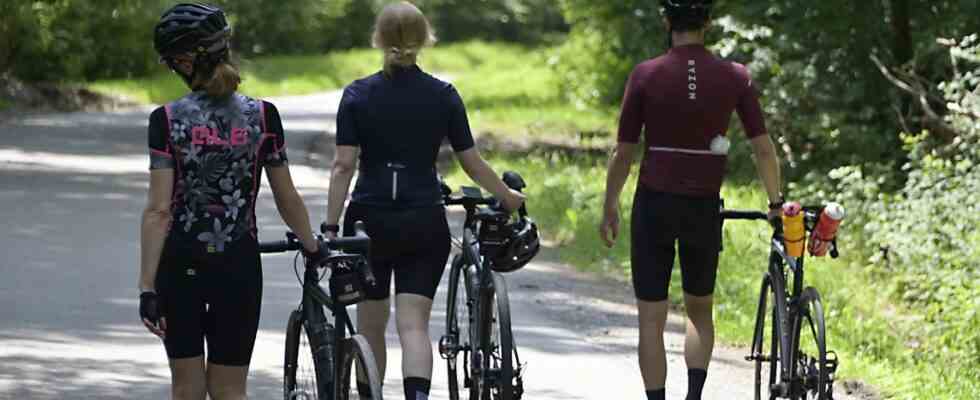According to the local politicians in Straßlach-Dingharting, cycling down into the Mühltal is too dangerous, even in winter. Munich-based Simon Lutz had filed a complaint against the ban on cycling on the descent towards the Isar Canal, and the Munich Administrative Court then recommended at an on-site visit in January that cyclists be allowed to remain in the saddle at least between October and March. The municipal council has now voted unanimously against such a seasonal lifting of the ban. However, he intends to put up a series of signs. However, the verdict of the court is still pending.
Accidents involving cyclists have repeatedly occurred on the steep stretch of road, some of which has a gradient of 18 percent. The Grünwald Police Inspectorate, which is responsible for the road in the direction of Gasthaus Mühle and the raft slide, also reported a number of accidents, some of which also injured pedestrians. The cycling ban has therefore been in place at this point for 30 years, and very few have adhered to it. Who likes to push their bike downhill? Incidentally, driving uphill is permitted, and driving a car is also permitted at a speed of 30 km/h. Because the traffic situation in the community seemed too dangerous, especially due to racing cyclists racing downhill, they had a large banner installed at the beginning of the downhill section in June 2020, making it unmistakably clear: “Risk of accidents. Downhill for cyclists prohibited.”
The administrative court in Munich met on the route in January.
(Photo: Claus Schunk)
That did not suit the plaintive cyclist Lutz at all. Neither does the General German Bicycle Association (ADFC), of which Lutz is a member, but as an association they cannot sue. The court traveled to the Mühltalberg just over a month ago, measured the route, discussed the width of the street that pedestrians, cyclists and cars have to share and came to the conclusion: In the upper area, where the street crash barrier on one side and a steep slope on the other side becomes a ravine and the steepest section has an 18 percent gradient, it makes sense that cyclists would be better off pushing.
However, the presiding judge Dietmar Wolff did not see the steepness of the route as a problem, because there are many such descents in the region. Rather, he had the excursion traffic on this road in mind when weighing up the options. Isar canal and beer garden are popular destinations, the route is even recommended in a hiking guide for families. So the court came up with the idea that a seasonal ban and folding signs might be the solution.
But the council sees it differently. “The inn is also open in winter, it’s a year-round operation,” says Mayor Hans Sienerth (independent). Excursion traffic is therefore also available in the winter months. And the cyclists are still on the move. “We had the police confirm that cycling is unchecked all year round these days,” says Sienerth. Add to that the wintry road conditions. The descent is cleared, but split or icy spots make it particularly dangerous in winter.
From the point of view of the court, however, the sliding arrangement should not apply all the way down to the canal. According to the community, it was never intended that way, but it was never marked as such. About two-thirds of the way down, the Isar Valley Cycle Path joins the road from the right. Cyclists should be allowed to get on here again, and the municipality wants to mark this with a corresponding traffic sign. The length of the sliding distance, namely 600 meters, should also be announced above. The municipality wants to put up another sign at the junction of the Oberholzweg to indicate that cycling is banned after 800 meters.
Hartmut Schüler, the local chairman of the ADFC, does not want to comment on the decisions in the municipal council at the moment. “We are waiting for the written justification of the verdict,” he says.

